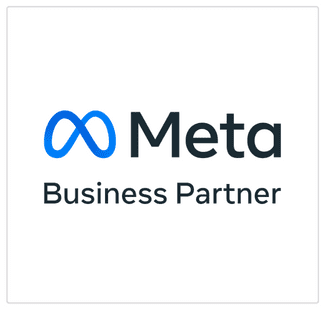Content clustering is a sophisticated method in search engine optimization (SEO) strategies, focused on strengthening the authority and efficient organization of a site among online search results. They involve creating a pillar page, a comprehensive resource covering a broad topic within a site’s niche. This pillar page underpins the entire cluster and provides a detailed overview, essential information and comprehensive insights into the main topic.
1. What are content clusters or topic clusters?
Content clusters are organisational structures of content on a website, consisting of a central pillar page and several associated subtopic pages. The pillar page serves as the focal point of the entire cluster, providing an in-depth overview of the main topic. The subtopic pages are interlinked with each other and with the pillar page, providing detailed and specialized information about specific aspects or subcategories of the main topic.

Source: Matt Barby
Content clusters and adapting to search engine changes
Search engines are forcing websites to adapt at an accelerated pace. Marketing agencies and SEO experts are no longer just looking for ways to align with consumer behavior. They are forced to do so because of continuous changes in search engine algorithms, which react to constant changes in the way users formulate their queries and search for information online.
Years ago, a simple keyword query could bring satisfactory results to users. Today, however, people ask more complex and specific questions, expecting precise and relevant answers. This change in search behaviour has required an adaptation in the way websites are structured and provide information.
In this evolution, content clusters are becoming essential to meet the new requirements of search engines and online users. They not only organise content strategically, but also link relevant information together.
2. Benefits of content clusters in SEO
Implementing content clusters in an SEO strategy brings multiple benefits. They help to strengthen the authority of the website by providing comprehensive and interconnected content. Search engines value such structures, recognising their relevance and giving them a better position in search results. Also, users browsing a site with a well-organised cluster have a more pleasant experience and can access detailed and contextual information easily and efficiently.
Content clusters are more than just organising information on a website. They are intelligent structures, composed of a central core page and subtopic pages that converge towards a main topic. The pillar page is the heart of the cluster, providing a broad and deep presentation of the topic, and the subtopic pages complete the landscape, providing specialized and interlinked details.
Why are topic clusters important?
Effective topic grouping is the key to successful SEO.
Why? Think of it as building an authority. With every quality piece of content published on a relevant topic, you expand the range of keywords you can use and rank for. The further you go into a topic, the more credibility and authority you build in the field.
But what makes this so crucial? Google doesn’t just look for content; it looks for relevant, credible and clear content. Essentially, it goes for sites that demonstrate not just information, but Expertise, Experience, Authority and Trust (E-E-A-T).
Improving E-A-T through content clusters
By consolidating information in the form of a content cluster, a solid online presence is built, reflecting trust and expertise. The pillar page provides an overall picture, reflecting expertise and authority, while the subtopic pages complete this picture, providing details and deepening the subject matter. Together, they not only answer users’ questions, but demonstrate expertise in a clear and coherent way, which becomes essential to gaining a privileged place in search engine rankings.
3. Structure and organisation of a topic cluster
The content cluster is formed by interconnecting the pillar page with the subtopic pages, thus creating a cohesive network of information. The pillar page is the central hub that links and directs users to the different subtopic pages, maintaining the coherence and relevance of the whole cluster. This well-organised structure is essential to indicate to search engines that the site provides comprehensive and interlinked information on the topic.
Here are some strategies that can help you build a cluster strategy:
Discover the fundamental needs of your audience:
Determine five to ten basic problems your buyer persona faces. Take the time to gather relevant information, using various methods such as surveys, interviews or online research.
Group issues into thematic areas:
Organise each issue around a broader thematic area to highlight the main directions of your audience’s interests.
Build the topic structure:
Using keyword research, develop the main topics and associated subtopics to form the skeleton of your content cluster.
Content map:
Start turning these ideas into tangible content that fits each topic. Be creative and make sure each piece of content adds value.
Validate and optimise:
Don’t forget to validate each idea and make improvements based on feedback and data from industry and competitor analysis.
Create, measure, refine:
Finalize content, evaluate impact and make adjustments where necessary to ensure you are meeting the audience’s requirements.
Creating an effective content cluster requires strategic steps. It is crucial to start with careful research of keywords and topics of interest to your target audience. Then, the pillar page should provide a complete overview of the topic, while subtopic pages should focus on particular aspects, providing detailed information. Careful optimisation of content and intelligent interlinking between pages are essential for the success of a content cluster.
4. Impact of content clusters on user experience
Cluster structure improves user navigation on the site. It provides a more fluid and coherent experience, allowing visitors to explore content in depth without getting lost in the maze of information. Simplified access to detailed information, while maintaining the link to the overall context, contributes significantly to user satisfaction and time spent on the site.
There are many websites that have benefited from implementing content clusters. For example, a travel website might have a pillar page on “Exotic Destinations” and sub-theme pages detailing each destination. The results, such as increased organic traffic or improved ranking in SERPs, demonstrate the effectiveness and importance of these structures.
5. Key factors for the successful implementation of clusters
Successful implementation of content clusters requires attention to detail and strategic planning. It is crucial to maintain the coherence and relevance of the whole cluster, and continuous optimisation and updating of content is essential to maintain performance over time.
Content clusters are a powerful tool in SEO strategies, providing websites with an efficient way to strengthen their authority and provide valuable, interlinked information to their users. By implementing a well-thought-out and constantly updated content cluster structure, websites can achieve significant results in search engine rankings and user experience.
If you want to improve your online presence and bring your business into the spotlight through SEO services, turn to re7consulting digital marketing agency. Turn your website into a powerful source of authority and visibility. Contact us today to find out how we can build together a customized strategy that will bring tangible results to your business!







